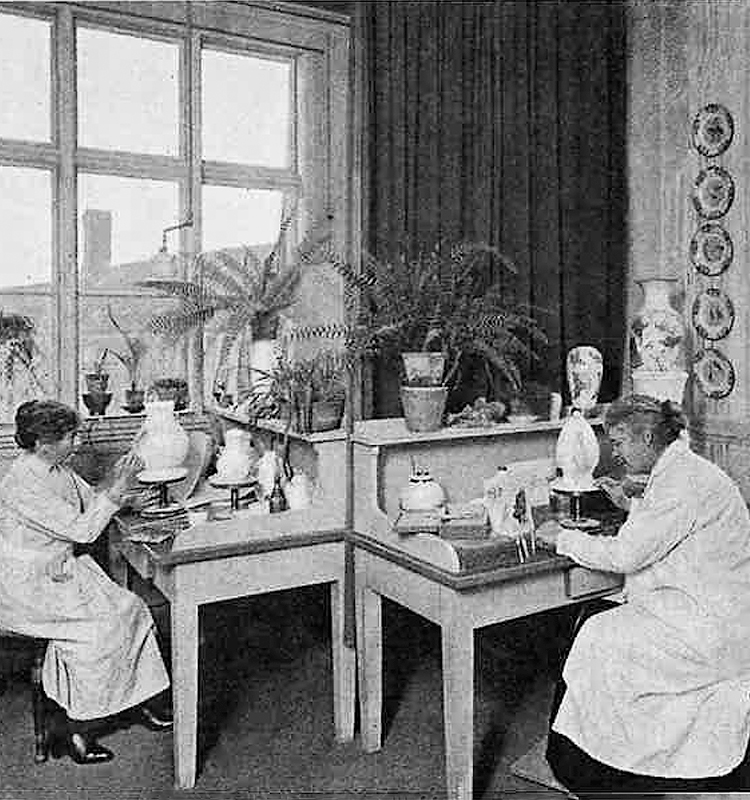Effie Hegermann-Lindencrone & Fanny Garde – The Pioneering Women of Ceramics
|
“The ardent interest she took in her art to the last, the joy she showed at the success of new experiments, and the disappointment she felt when something went wrong, such youthful enthusiasm for her work, made being with her an experience for younger colleagues.” So wrote the artist and writer Ebbe Sadolin in the Danish evening newspaper “Nationaltidene Aften” after the ceramicist Fanny Garde’s (1855–1928) death. Although the quote is only about Fanny Garde, the stories about her and Effie Hegermann-Lindencrone (1860–1945) are inseparable. After their first meeting in 1880 at the Drawing School for Women, they never parted again until Fanny Garde’s death in 1928. Pietro Krohn, the artistic director at Bing & Grøndahl, discovered the talents of Fanny Garde and Effie Hegermann-Lindencrone at the Drawing School for Women. In 1886, they were therefore employed at B&G to decorate Krohn’s “Hejrestellet” (Heron service), which required them to master the challenging technique of underglaze painting. In the late 1880s, porcelain painting was usually done by men, which is why the two women’s work at the porcelain factory was unusual. The beautiful “Hejrestellet” was a success and attracted admiration at the Paris Exposition in 1900. Both Fanny Garde and Effie Hegermann-Lindencrone were also well represented here with their own ceramic works, and they garnered great recognition. Both women mastered the new underglaze technique and quickly developed a considerable talent within design in their own right. In their day, they were recognised for their beautiful works, which were acquired by various foreign museums. The two women lived together and shared a studio, where they created some 2,000 unique works. At first glance it can be difficult to tell their works apart. It was through a shared passion for porcelain and consulting with each other that they took ceramic design to a higher level. Their amazing ability to add details in the modelling of flora and fauna testifies to the Art Nouveau trends and the fascination with Japanese culture – the so-called Japonisme – at that time. Fanny Garde and Effie Hegermann-Lindencrone remained active throughout their lives, maintaining a passionate interest in art and design. They have undoubtedly served as female role models for future generations of skilled ceramicists. Today, the two artists are regarded as the most significant female ceramicists of their time, and it is no wonder that Fanny Garde and Effie Hegermann-Lindencrone’s wonderful, unique pieces are in high demand on the auction market. |

|